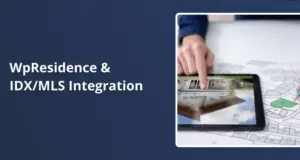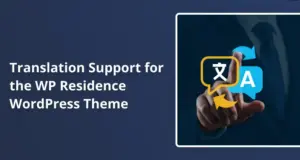Hi there, real estate warriors! In the digital world, your real estate website is like your business card, office, and portfolio all rolled into one. It needs to look good, function seamlessly, and serve multiple purposes without breaking a sweat. Today, I’m sharing the top features you need to include to ensure your website doesn’t just sit there collecting dust. Let’s dive in!
Feature #1: SEO Optimization
If your website isn’t showing up on search engines, is it even a website? SEO is a no-brainer for real estate websites because, let’s be honest, what good is a stunning site if no one can find it? Optimizing your real estate website for search engines is crucial for driving organic traffic and getting more eyeballs on your listings. But, it’s not just about throwing some keywords on a page and calling it a day. You need a comprehensive strategy that makes your site the go-to resource for anyone searching for homes, market data, or real estate tips.
Here are some tips to improve your SEO:
- Use relevant keywords in your content, headings, and meta tags
- Optimize images with descriptive file names and alt text
- Ensure your site is mobile-friendly and loads quickly
- Consistently publish high-quality, original content on your blog
- Build backlinks from reputable websites in the real estate industry
There are many tools to help with SEO, including Google Analytics, Yoast SEO, and Moz. For example, Yoast SEO is a fantastic plugin that helps you optimize your content for search engines and provides a simple checklist to ensure you’re hitting all the right marks.
Feature #2: Lead Capture Mechanisms
If your website isn’t capturing leads, it’s like throwing a party and not inviting anyone. Without leads, you have no clients, and without clients, well, you have a lot of free time. So, let’s make sure your site is working for you. Lead capture forms and landing pages are essential for converting visitors into leads.
Offer something of value, like a homebuyer’s checklist, in exchange for contact information. Make sure your forms are easy to fill out—no one wants to spend 10 minutes just to download a PDF. You can use tools like Mailchimp or Leadpages to create beautiful, high-converting lead capture forms and landing pages.
Feature #3: Integrated CRM System
Managing leads can be like herding cats if you don’t have the right system. An integrated CRM (Customer Relationship Management) system is crucial for automating lead management and follow-ups, streamlining your workflow.
With an integrated CRM, you can manage all your client interactions in one place, ensuring no lead slips through the cracks. An integrated system allows you to track where each lead is in the buying process, schedule follow-ups, and set reminders. Many website builders offer integrated CRMs, or you can use a separate tool like HubSpot or Salesforce.
Feature #4: User-Friendly Navigation
If users can’t find their way around your site, they’ll leave faster than a bad date. Easy navigation is key to keeping visitors on your site and moving them toward becoming clients.
Organize your website into clear sections with intuitive menus. Use descriptive category names like “Buyers,” “Sellers,” and “Rentals.” Make sure every page has a clear call-to-action button guiding users on what to do next, like “Schedule a Consultation” or “View Listings.” These buttons should be easily accessible and visible without scrolling.
Feature #5: High-Quality Listings
Your listings are the main event on your website, so they need to be front and center. High-quality photos and detailed descriptions are essential for showcasing your properties in the best light.
Professional photos and videos are a must. Make sure your photos are well-lit, show the home’s best features, and are in high resolution. Consider hiring a professional photographer if you need to step up your game. Descriptions should be detailed and include all the important features buyers care about, like square footage, number of bedrooms and bathrooms, and any recent upgrades.
Feature #6: Integrated CRM System
If you’re managing all your leads and clients manually, bless your heart. Integrated CRM tools are crucial for streamlining your workflow and keeping everything organized.
Integrate a CRM with your website to automatically import leads and manage follow-ups. This integration saves time and ensures no lead slips through the cracks. CRMs can automate follow-up emails, schedule reminders for calls or meetings, and segment your contacts for targeted marketing campaigns. Popular real estate CRMs like Wise Agent and Real Geeks offer integration options that can transform how you manage your business.
Feature #7: Community Pages and Local SEO
Community pages are like your secret weapon for attracting local clients. They improve local SEO and provide valuable information to potential clients.
Create community pages for each neighborhood you serve, with market data, schools, amenities, and local events. These pages help position you as the local expert, making it more likely for potential clients to choose you over other agents. Plus, the additional content boosts your SEO, helping your site rank higher in search results.
Feature #8: Automated Appointment Scheduling
If you’re still playing phone tag with clients to schedule appointments, it’s time to step into the 21st century. Automated appointment scheduling tools take the headache out of booking meetings.
Embed scheduling tools like Calendly or Acuity Scheduling directly on your website. These tools allow clients to book appointments at their convenience, syncing with your calendar to avoid double bookings. Plus, many scheduling tools offer integrations with CRM systems, ensuring all appointment details are automatically recorded and follow-ups scheduled.
Feature #9: Effective Funnels
Don’t just lead your clients to water—make sure they’re thirsty for more. Effective sales funnels guide potential clients through their journey from awareness to decision-making.
Use funnels to segment your audience and tailor your messaging at each stage. Create specific paths for buyers, sellers, and investors with targeted content and calls-to-action. For example, first-time homebuyers may need more education and guidance than seasoned investors. By nurturing your leads with relevant information and solutions, you’re much more likely to convert them into clients.
Feature #10: Valuable Content and Blogging
Your website is more than just a listing platform—it’s a powerful tool for marketing and lead generation. Sharing valuable content and regularly blogging can keep your site fresh and position you as an industry expert.
Create blog posts about local market trends, home maintenance tips, or success stories from clients. You can also create separate sites for specific niches, like vacation rentals or commercial real estate, and direct traffic to those sites. Additionally, consider repurposing your content for different formats, like email newsletters or social media posts.
Putting It All Together
With the right features and strategy, your real estate website can be a powerhouse for generating traffic, capturing leads, and converting clients. From SEO optimization and lead capture forms to integrated CRM systems and automated scheduling, every element of your website should work together to create a seamless user experience.
What features do you think are most important for a real estate website? Let us know in the comments!








